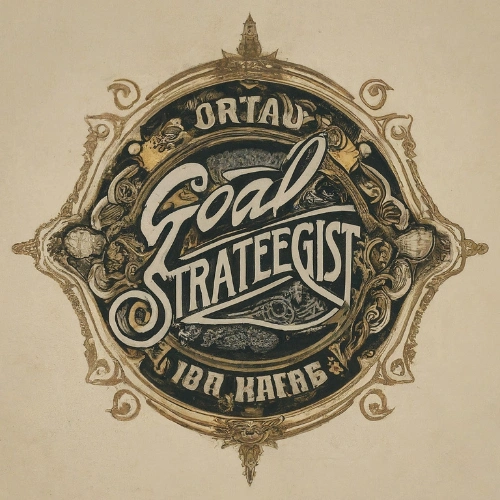Diving into the annals of history, you’ll find the Muslim League as a pivotal player in the subcontinent’s political arena. Established in 1906, it was the driving force behind the creation of Pakistan. But what were the goals that fueled its fervent campaign?
The League’s objectives evolved over time, reflecting the changing political landscape. Initially, it championed the rights of Indian Muslims within the broader British Indian Empire. However, as you’ll see, its focus shifted dramatically, leading to a call for a separate Muslim nation.
Understanding the Muslim League’s goals offers a glimpse into the complexities of colonial politics and the birth of nations. It’s a journey through aspirations for self-governance, protection of minority rights, and the quest for a homeland. Strap in; you’re about to unravel the ambitions that reshaped South Asian history.
The Formation of the Muslim League
When you dive into the history of the South Asian subcontinent, you’ll discover the pivotal birth of the Muslim League on December 30, 1906. The origins of this influential political party are rooted in the divide-and-rule policies of the British Raj, which amplified tensions between various religious communities. The Muslim League emerged as a response to these growing rifts, with its initial goal being to protect the interests of Indian Muslims under the colonial yoke.
The All India Muhammadan Educational Conference held in Dhaka was the turning point, where the League was officially established. Nawab (Sir) Salimullah of Dhaka played a key role in its formation along with other leading Muslim figures who felt the need for a separate political organization to address their community’s concerns. They perceived a threat to Muslim interests from the rising influence of the Indian National Congress, which they felt was predominantly Hindu.
In the years that followed, the Muslim League began to articulate its vision for Indian Muslims. They emphasized the need for preservation and enhancement of their identity in a predominantly Hindu society. As a powerful platform, the League lobbied for constitutional reforms and greater representation in government while fostering unity among Muslims across diverse regions.
Despite its formation as a single entity aiming to represent Muslim interests, the League initially struggled to gain traction among the Muslim masses. It was seen as an elitist organization with its leadership largely comprising nobles and landowners.
The evolution of the Muslim League’s goals, particularly after the pivotal Lucknow Pact of 1916, further exemplified its changing dynamics and rising aspirations. This pact marked a significant moment, with the League joining hands with the Indian National Congress to demand self-governance for Indians whilst ensuring rights for minority communities.
As you can see, the formation of the Muslim League was more than just a response to immediate political issues; it was a first step that would ultimately lead to momentous changes in the Indian political landscape. Its growth and the shifts in its objectives had profound implications for the future of the subcontinent.
Early Goals of the Muslim League
When you look back at the Muslim League’s inception, it’s clear that the organization had specific founding visions. The primary objective was to safeguard the rights of Muslims within the colonial power structure of British India. The leaders of the Muslim League sought to ensure that Muslim interests were adequately represented at all levels of government, a concern that was amplified by the rise of other political groups which appeared to cater primarily to the interests of the Hindu majority.
The concern for Muslims’ political rights and identity within a largely Hindu-dominated population led to some key endeavors. The League’s early efforts focused on:
- Promoting unity among Indian Muslims
- Presenting Muslims’ collective demands to the British
- Countering the influence of the Indian National Congress
Understanding the complexity of British India’s political landscape, the League focused on lobbying for fair and equitable treatment in legislative and administrative matters. Separate electorates for Muslims, a concept that the League advocated for, ensured a distinct political representation.
As time progressed, economic and educational development for Muslims also became part of the early agenda. The need for enhanced educational opportunities was seen as pivotal for the Muslim community to thrive and maintain their cultural heritage. The leaders of the League recognized that socioeconomic empowerment was integral to political participation and the preservation of Muslim identity in a rapidly changing world.
The direction of the Muslim League’s goals became more robust and decisive following The Lucknow Pact. At this turning point, the emphasis on self-governance and minority rights became more pronounced, laying down a framework for what could eventually evolve into separate statehood claims. Yet the formative years were crucial in establishing the groundwork as the League navigated a complex sociopolitical environment, setting the stage for the future unfolding of Indian politics.
Shifting Political Landscape and Changing Goals
As the political climate in British India evolved, so did the goals of the Muslim League. During the 1920s and 1930s, the League found itself navigating a rapidly changing landscape where the demand for Indian self-rule gained prominence. The shift was a response to the growing discontent with colonial rule and the increasing push for autonomy by various Indian political entities.
The Allahabad Address of 1930 was a significant milestone. It was here that the idea of separate Muslim nationhood, later to be known as Pakistan, was articulated by philosopher-poet Muhammad Iqbal. This idea struck a chord with the younger members of the Muslim League who felt that a separate Muslim homeland was the only way to preserve their rights and cultural identity in a predominantly Hindu India.
Post-1930, the League’s leadership under Mohammad Ali Jinnah adopted a more assertive stance on Muslim autonomy. Jinnah, once a member of the Indian National Congress as well as the Muslim League, had become disillusioned with the Congress’s approach to Muslim concerns. He began to steer the League towards demanding a separate nation for Muslims, which would ultimately lead to a fundamental recalibration of its goals.
- Support for British wartime efforts: In the context of World War II, the League decided to lend support to the British, which they saw as a strategic move to secure British backing for their cause of a separate Muslim state.
- 1940 Lahore Resolution: This was a defining moment for the League. It called for independent states for Muslims in the northwestern and eastern zones of India.
The Muslim League’s transformation from merely a guardian of Muslim interests into a powerhouse advocating for a separate nation-state underscored the fluidity of its objectives. The League adeptly harnessed the shifting tides of the era, transitioning from a moderate platform of protecting rights to a bold champion of nationhood. Its evolving strategies reflected an acute awareness of the political winds, demonstrating a shrewd political acumen that would set the tone for subsequent decades.
Electoral Success and Popular Support: The League’s electoral triumph in the 1945-46 elections further consolidated its position. Garnering widespread Muslim support, it proved that its redefined goals resonated with the masses. As a result, the League’s bargaining power increased significantly, enabling it to exert considerable influence over the future political trajectory of India’s Muslims.
Call for a Separate Muslim Nation
When exploring the goals of the Muslim League, it’s critical to recognize the pivotal moment in 1940 when the call for a separate Muslim nation took center stage. With the Lahore Resolution, the League didn’t just propose an idea; it demanded a sovereign state for Muslims in the northwestern and eastern areas of British India.
This move wasn’t made in isolation. As you delve deeper, you’ll find the rich tapestry of Indian politics colored by intense negotiations and clashes between the League, the Indian National Congress, and the British government. This tripartite struggle shaped the League’s resolve to push for Pakistan—a land envisioned to safeguard the rights and interests of Muslims in a predominantly Hindu region.
- 1940 Lahore Resolution: Called for autonomous “states” for Muslims in India.
- 1945-46 Elections: Demonstrated the Muslim League’s widespread support among Indian Muslims.
The electoral triumphs of the League in the 1945-46 elections underscored the Muslim community’s endorsement of the separate nation theory. By securing nearly all the reserved Muslim seats, the Muslim League not only amplified its political clout but also sent a clear message to opposing forces that the demand for Pakistan was supported by the masses.
As negotiations for India’s independence from British rule intensified, the Muslim League’s leadership stood firm on their terms. They posited that a unified India was untenable and that only a separate nation would suffice to protect their cultural, political, and religious freedoms. Through a mix of political strategy and advocacy, they aimed to alter the subcontinent’s geopolitical landscape forever.
Remember, the struggle for Pakistan was as much about political representation as it was about creating a national identity. The League’s narrative pivoted around fostering a sense of belonging and unity among Muslims spread across British India, presenting Pakistan as the epitome of Islamic prosperity and self-governance.
Significance of the Muslim League’s Goals
The establishment of a sovereign state for Muslims was more than just a political maneuver; it was a symbol of aspiration for an entire community. The goals set forth by the Muslim League not only shaped the geopolitical landscape of South Asia but also had a profound impact on the global recognition of religious and cultural identities.
A New Political Entity: The demand for Pakistan redefined the concept of nationhood in South Asia. You’d see that the ensuing creation of Pakistan marked the first nation-state born out of an ideology—preservation and promotion of a distinct cultural and religious identity.
Cultural Preservation: The Muslim League’s advocacy went beyond politics, delving deep into the protection of a rich Islamic heritage. They aimed to ensure that Muslims in South Asia could maintain and express their cultural practices without fear of assimilation or persecution.
- Political Empowerment: The League’s resolve provided Muslims with a voice in a dominantly Hindu region. Electoral success proved that the League’s goals resonated with the masses, and it ensured that a separate Muslim identity was a force in regional politics.
- Fostering Unity: The struggle for Pakistan also fostered a sense of unity and belonging among Muslims scattered across British India. It gave them a collective goal and a shared vision of the future.
As the Muslim League pressed on with its demands, it carved a distinctive narrative of nationhood based on religious foundations—something that was relatively uncommon in those times. You’d realize that the objectives of the Muslim League reverberated through time, influencing the political strategies of other emerging nations and movements.
Remember, the push for a separate Muslim nation was not just about obtaining administrative control. It was about securing a future wherein the cultural, political, and religious freedoms of a minority were safeguarded. It’s evident that the legacy of the Muslim League’s goals is intricately woven into the fabric of modern nation-states and continues to echo in the principles of self-determination and autonomy.
Conclusion
You’ve seen how the Muslim League’s goals transcended mere political gains to forge a distinct national identity for Muslims in South Asia. Their unwavering commitment to a separate Muslim state of Pakistan was a testament to their dedication to cultural, political, and religious freedoms. This movement wasn’t just a footnote in history; it was a monumental shift that reshaped the geopolitical landscape and set a precedent for future nation-states. The legacy of the League’s aspirations and their impact on self-determination resonates even today, reminding you of the power of a unified voice in advocating for minority rights and the preservation of cultural identities.


Leave a Reply